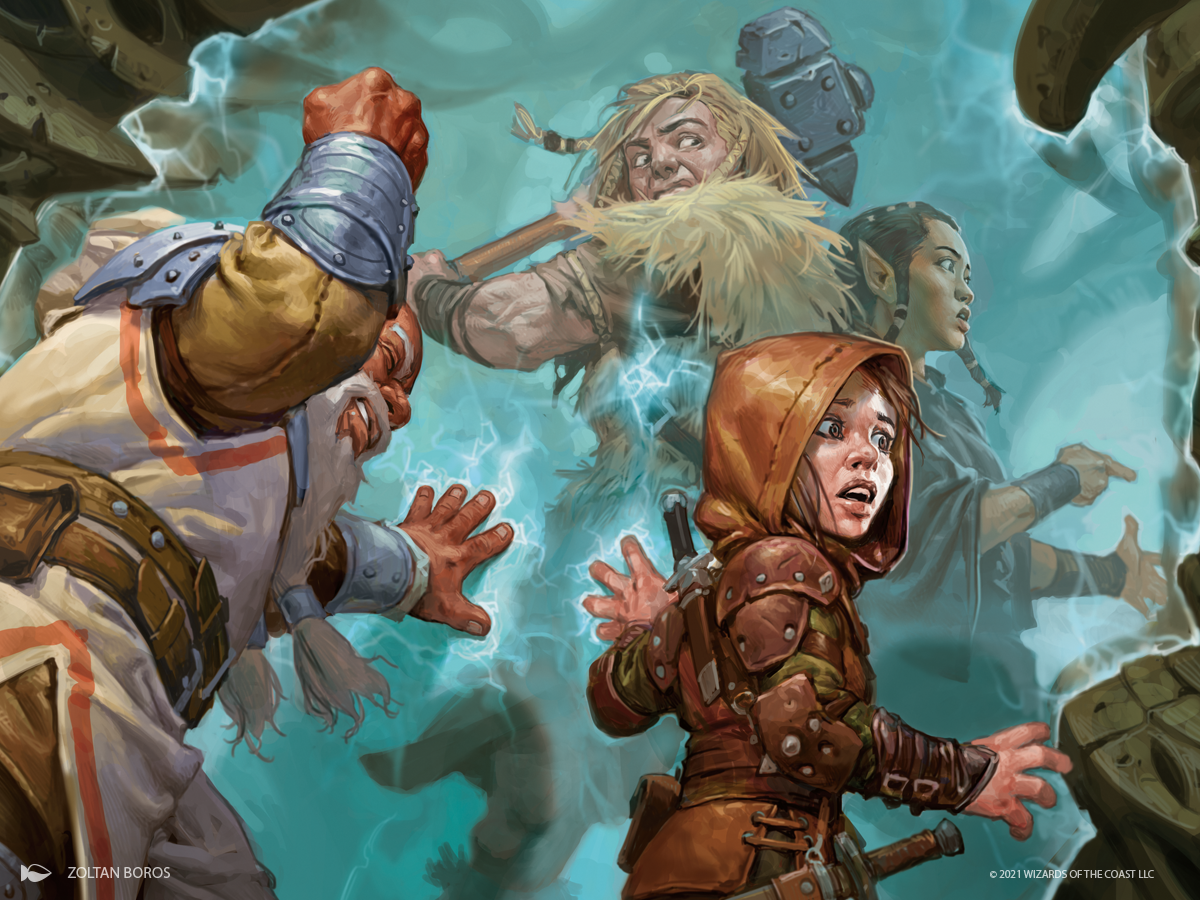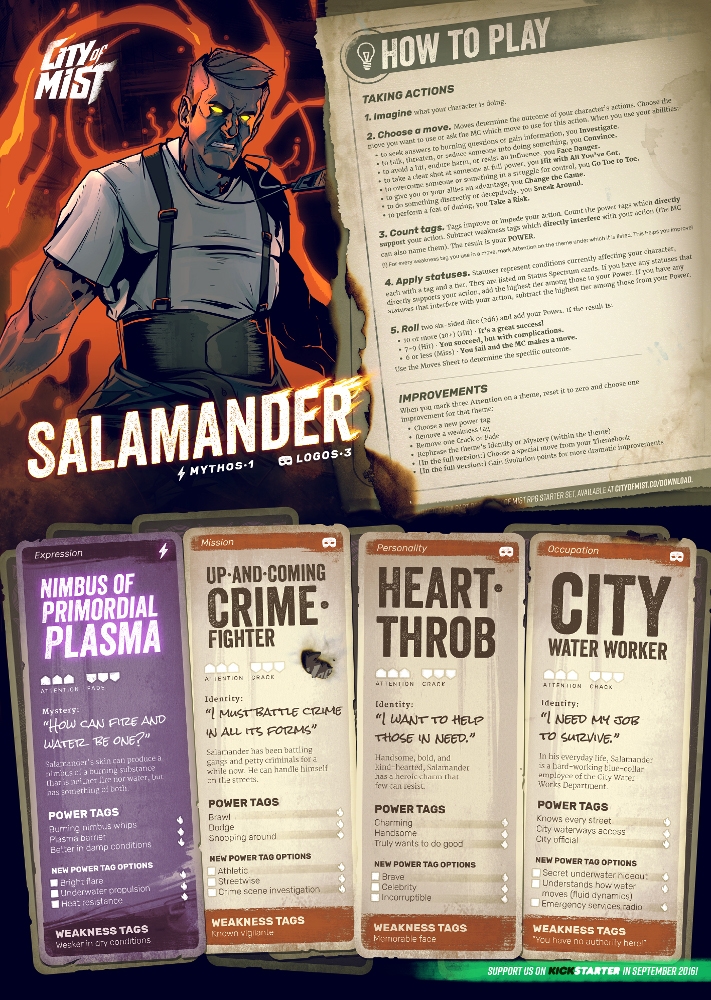Five Roleplay Systems to Use For Your Next Game


Sick of Dungeons & Dragons? Here are some systems we recommend you take a look at before setting up your next game.
Don’t get me wrong—Dungeons & Dragons is a terrific system. It’s incredibly versatile and works very well in any setting. But doesn’t it get old playing the same system repeatedly? Don’t you think it’s time to stop rolling that basic 20-sided die and pick up a D10 or maybe even 2D6?

One of the fundamental elements of a tabletop roleplaying game is the second word: roleplaying. While D&D has some social aspects, it primarily has more mechanics dedicated to combat encounters. I have seen very few combat encounters get solved with a simple, “Hey, friends, let’s talk this out!”
So, if you’re in the mood for a system that might require some tact and etiquette, here are some of my personal suggestions!
No More D&D? Have You Ever Heard of This System Called “Pathfinder”?

While not an obvious pick, the Pathfinder 2e community has made it clear why their game works so much better than its predecessor. Usually, this difference is mainly brought up in the context of mechanics or combat. However, avid fans have also brought up how roleplay comes far more easily in Pathfinder than it does in D&D.
One of the most prominent examples is the system’s wide variety of classes, which is one of its biggest pros. This more significant number of classes allows players to create numerous character concepts without having to flavor the mechanics present. Thus encouraging more creativity on behalf of the players!
What I want to bring to light that not many people might know about is the system’s “attitude” mechanics. Attitude is a way to deepen player-NPC conversations by giving stakes to how characters interact with those around them. That’s right, RICK. You can’t just pants my blacksmiths willy-nilly anymore!

Social attitudes and their consequences make players think twice before offending their local barmaids. When interacting positively with an NPC, this mechanic ensures they’ll remember it in the future and will treat you accordingly. The same thing vice versa.
READ MORE: How to Get Started in Paizo’s Pathfinder 2E — Dungeon Crawling with a Crunch
City of Mist: The Only System Where Son Goku Can Fight Spongebob Squarepants
Picture this—your friend has invited you to play another TTRPG with them. You are excited to join, but you’re weary. You’re tired of writing deep, intricate characters for a system with too many mechanics to count. Mainly because the system doesn’t let you make the dream character you’ve always wanted to make!
A detective with a dark alter ego that gives them the bottomless hunger of Monkey D. Luffy!

City of Mist is a Powered by the Apocalypse system with profound lore and infinite character possibilities. While I can’t get into the lore right now, I implore you to take some time and read it yourself.
To summarize, City of Mist is an urban fantasy system set in a real city with real people working real jobs. However, an ominous “mist” set upon the entire town gives people unique abilities called “mythos.” These mythos allow people to tap into the powers and abilities of any fictional idol they want at the cost of their humanity and identity.
As a player, you design your human character and what connects them to reality, like loved ones, landmarks, prized possessions, etc. But you also pick a mythos that inhabits your character’s body, which can be anything. From Deadpool to Bugs Bunny to simply the Infinity Gauntlet if you want it to be. If it exists in our world, it can be a mythos.



However, this gets interesting because, in exchange for your character’s ties to humanity, they can gain powers from your chosen mythos that you have free reign of choosing!
You had kids? No, you didn’t! What kids? You’re a middle-aged ice cream shop worker with the mythos of Doctor Manhattan, and now you can eradicate people who ask for too many sprinkles at will. It sure beats remembering the fact you had child support to pay!
Yet, at the same time, if you lose too many ties to your humanity, you fully embody your mythos and forget all about being human. And something like that is hard to come back from.
In summary, City of Mist is a fun, open-ended system that allows infinite character possibilities all wrapped up in a modern fantasy setting for you to enjoy.
READ MORE: ‘City of Mist’ is a Different Kind of Urban Fantasy
Get These Thirsty Sword Lesbians Some Water, Please!
April Kit Walsh wrote Thirsty Sword Lesbians, and Evil Hat Productions published it to massive praise from the LGBTQ+ community. Its name speaks for itself—end of discussion.
Most systems opt to use combat as a means to decide who wins a fight. Not with us queers, though. Instead, we use combat to talk about our feelings with one another and to convey our emotions. If the system’s name didn’t give it away, this book has some fantastic writing. It even won a Nebula Award in 2021 for its creative cuneiform!
This TTRPG uses the playbook character creation system, where the player chooses a specific archetype or type of character with a pre-established list of abilities or upgrade options to design their character around.
Playbook systems are, in my opinion, the best way to encourage creativity from your players. They’re easy to understand, short, sweet, and incredibly flexible with how players design their characters around the archetype.
The Thirsty Sword Lesbians system is flexible and can be interpreted in various settings. The campaign could occur in a traditional medieval, Renaissance, or Star Wars sci-fi fantasy setting. The setting is not specified; it guides the GM in structuring the campaign.
While you could slay your opponent with a mighty sword slash, the system encourages other means of negotiation. Your attacks could have powerful influences on your opponent’s emotional state, breaking them down until they have to concede to you. Or move them to your side of the argument, convincing them life with you is better than life on the run.
It may not be everyone’s cup of tea, but this fantastic system allows for colorful character development in various settings. If your characters want a heavy emotional conflict-centric campaign, give Thirsty Sword Lesbians a read!
READ MORE: ‘Thirsty Sword Lesbians’: The Indie RPG Title that Says It All
Zoinks, Scoob! Like, I Wish We Stayed in Crystal Cove!
Monster of the Week is a system that needs no introductions. Compared to other Powered by the Apocalypse systems, it is by far the crowned king in terms of popularity.
Also published by Evil Hat Productions, the system draws heavy inspiration from the “monster of the week” TV show trope and the many series well known for using it. Scooby-Doo Mystery Incorporated, Archer, Batman: The Animated Series, and even recent shows like Steven Universe are some popular examples of this trope in action.
As a playbook system, much like the last example, Thirsty Sword Lesbians, MOTW promotes character diversity and creativity by making the archetypes simple to understand.
There’s no standardized setting for the system, either. The GM can run a game in which the players are high schoolers saving their town from monsters, or the players could play hardened monster hunters looking for their next bounty.
Personally, one of the highlights of roleplay in MOTW often comes from how human the characters seem, no matter the setting. Watching these mortals clash and risk their lives facing these ominous threats always pushes the emotions to the surface. Given character death is often permanent, players must make their choices carefully.
READ MORE: Relive Your Favorite 90s Shows With ‘Monster of the Week’
The World of Darkness Needs No Introductions to the Light
If there were a TTRPG system I could characterize as the edge lord of TTRPGS, anything made for the World of Darkness wins by a mile. The world brings together all things that go bump in the night under one universe. To great success, too!

In 1991, the World saw its first installment in Vampire: The Masquerade, made possible by White Wolf Publishing. Ever since then, eight other systems have combined under one twisted roof.
While the system is a bit complex, its flexibility allows the players to create whatever they want. Ultimately, it all depends on what world the GM wants to dive into.
Do they want their players to become a coterie together in Vampire: The Masquerade? Controlling the world through a shadow government and keeping their beast at bay through consuming blood?
Or maybe their players are changelings, humans kidnapped and corrupted by the fey, now trying to reintegrate into human society? (I highly recommend this one, but it’s hard to get into. If you don’t want to try Vampire: The Masquerade, play Changeling: The Lost.)
Or maybe they’re humans who are sick of living under the heels of monsters? In Hunter: The Reckoning, the players play hunters who reclaim the night from the monsters lurking in the darkness.
All of these systems force the players to think deeply about their character backstories, how they fit into the world, and their goals. This also encourages them to consider their roleplay and how immersive an experience it sets up.

Deep character role-play isn’t essential for TTRPGs, but the “r” is there for a reason. TTRPGs give players a chance to be someone they aren’t. Whether that be a hero, villain, or murder hobo is up to them. Just have fun with what you’re doing. So long as you do that, then there’s no way to play a TTRPG wrong.
READ MORE: ‘Vampire: The Masquerade’: The First Step Into a World of Darkness
Do you prefer TTRPGs with more in-depth combat mechanics over roleplay? Or are you like me and enjoy playing a good, complex character with intricate motivations? What are some other systems that you think inspire roleplay in players?





